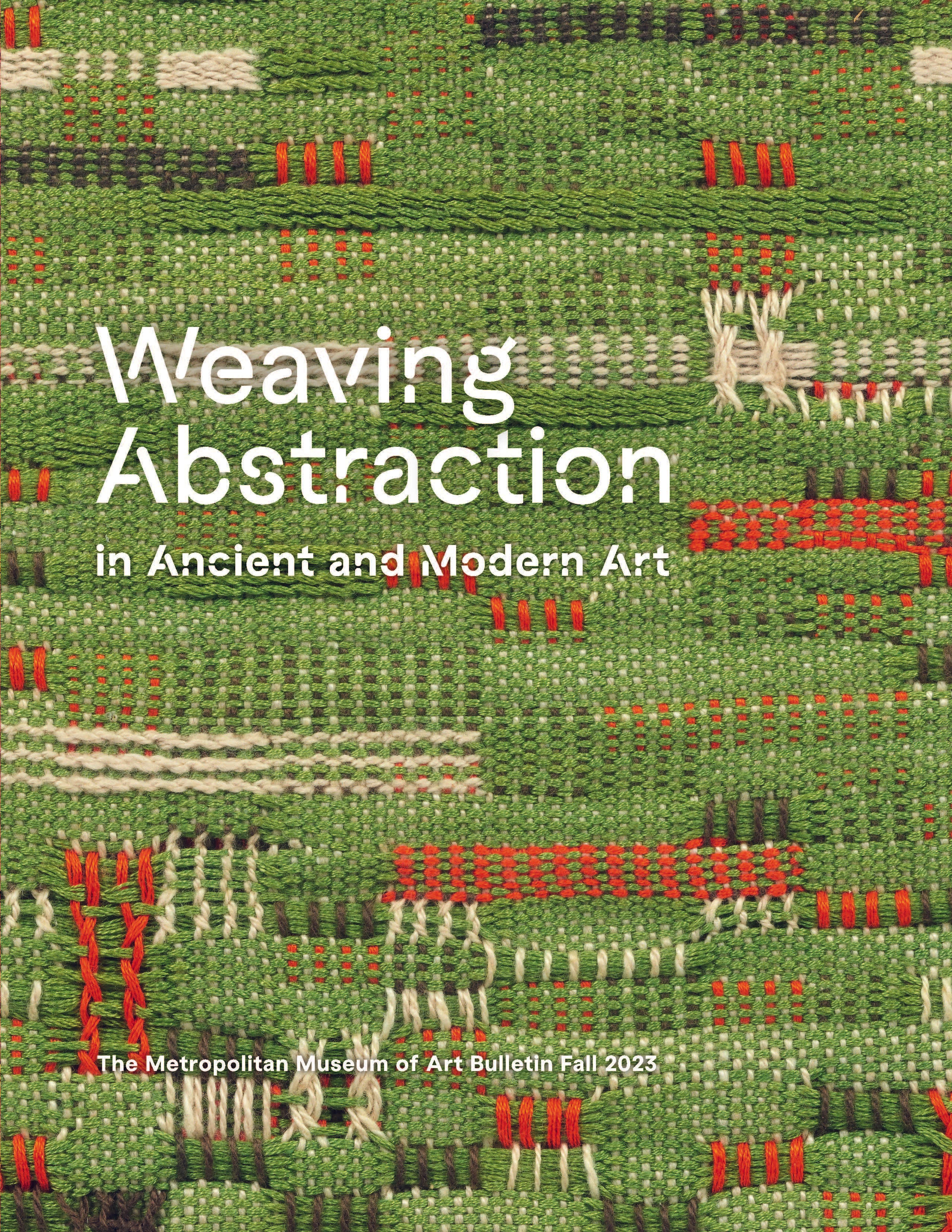Headcloth
This delicate open weave head cloth bearing a pattern of repeating and interlocking zoomorphic heads was made by artists in the Chancay Valley, north of Lima. The pattern was formed by initially embellishing an open weave gauze textile with a thicker cotton thread to form the teeth and eyes of the faces as well as the outline of the bands that connect the bases of the heads. Areas within the figures, as well as elements emanating from the bottom of each head, were subsequently embroidered with thin threads in a zig-zag pattern creating the semi-solid design areas. This creates an overall pattern of interlocking, perhaps feline, heads. In some examples of this technique, the thicker cotton was colored either blue, yellow or red, thereby highlighting the design. Interestingly, although the designs are easily seen when the fabric is opened out, textiles of this type are usually found collapsed as a headwrap with the pattern obscured.
References and Further Reading
Bjerregaard, Lena. Precolumbian Textiles in the Ethnological Museum in Berlin. Lincoln, NB: Zen Books. 2017, pp. 156-157.
D’Harcourt, Raoul. Textiles of Ancient Peru and Their Techniques. Seattle, WA: University of Washington Press. 1962, pp. 50-53.
Lavalle, José Antonio de, and Werner Lang. Arte y tesoros del Perú. Chancay. Lima, Peru: Banco de Crédito del Perú en la Cultura, 1982, pp. 31, 59, 65, 120, 138, 146, 148.
Lavalle, José Antonio de, and José Alejandro Gonzalez García. Arte textile del Perú. Lima, Peru: Industria Textil Piura. 1980.
Textiles of Andean Civilization. Tokyo: Idemitsu Museum of Arts. 1997, pp. 68-74.
References and Further Reading
Bjerregaard, Lena. Precolumbian Textiles in the Ethnological Museum in Berlin. Lincoln, NB: Zen Books. 2017, pp. 156-157.
D’Harcourt, Raoul. Textiles of Ancient Peru and Their Techniques. Seattle, WA: University of Washington Press. 1962, pp. 50-53.
Lavalle, José Antonio de, and Werner Lang. Arte y tesoros del Perú. Chancay. Lima, Peru: Banco de Crédito del Perú en la Cultura, 1982, pp. 31, 59, 65, 120, 138, 146, 148.
Lavalle, José Antonio de, and José Alejandro Gonzalez García. Arte textile del Perú. Lima, Peru: Industria Textil Piura. 1980.
Textiles of Andean Civilization. Tokyo: Idemitsu Museum of Arts. 1997, pp. 68-74.
Artwork Details
- Title:Headcloth
- Artist:Chancay artist(s)
- Date:12th–15th century
- Geography:Peru
- Culture:Chancay
- Medium:Cotton
- Dimensions:H x W: 24 3/4 x 23 1/2in. (62.9 x 59.7cm)
- Classification:Textiles-Non-Woven
- Credit Line:The Michael C. Rockefeller Memorial Collection, Gift of Arthur M. Bullowa, 1973
- Object Number:1978.412.254
- Curatorial Department: The Michael C. Rockefeller Wing
More Artwork
Research Resources
The Met provides unparalleled resources for research and welcomes an international community of students and scholars. The Met's Open Access API is where creators and researchers can connect to the The Met collection. Open Access data and public domain images are available for unrestricted commercial and noncommercial use without permission or fee.
To request images under copyright and other restrictions, please use this Image Request form.
Feedback
We continue to research and examine historical and cultural context for objects in The Met collection. If you have comments or questions about this object record, please contact us using the form below. The Museum looks forward to receiving your comments.
